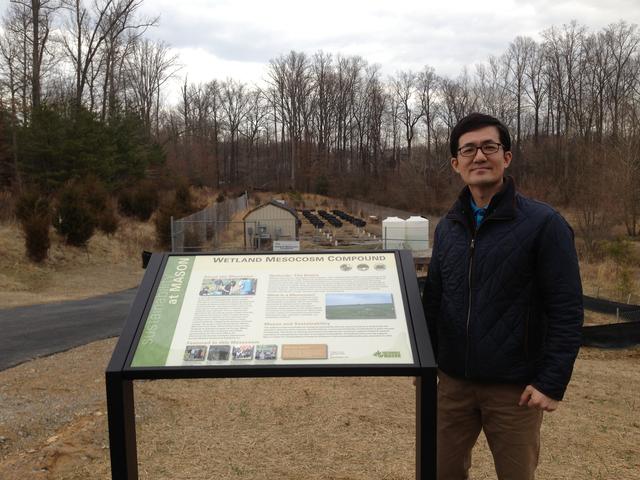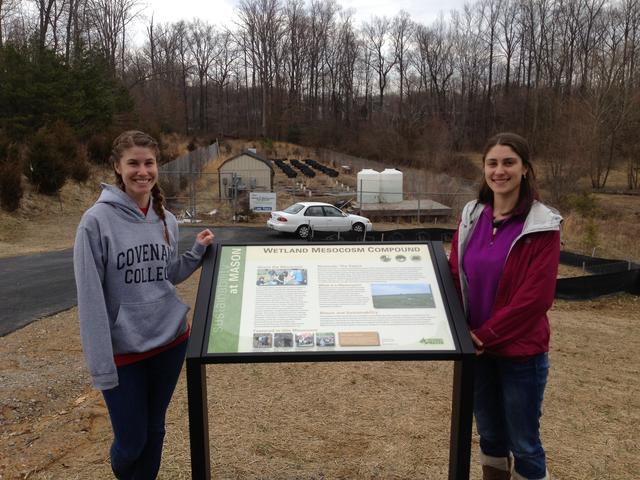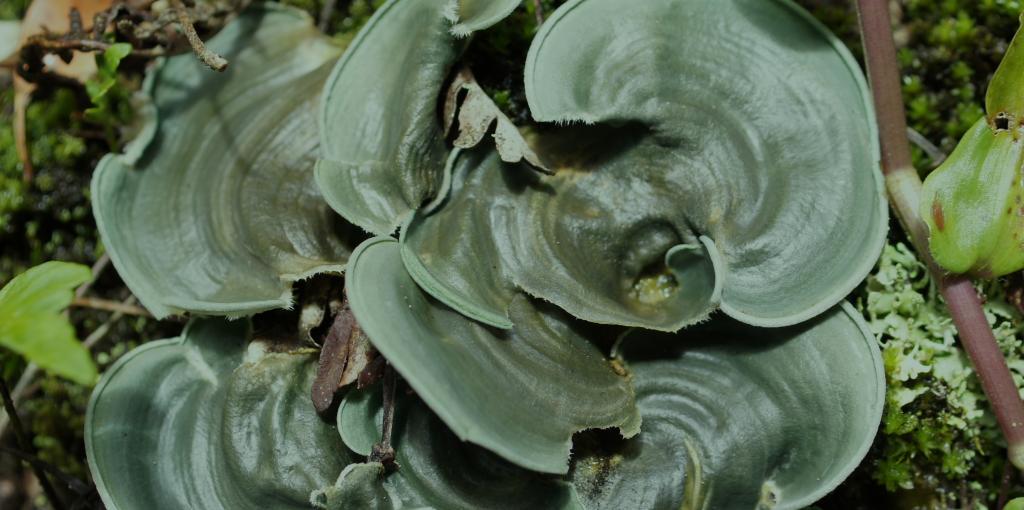Wetland Mesocosm Compound
- Home
- Academics
- Departments & Units
- Environmental Science and Policy Department
- Facilities and Centers
- Wetland Mesocosm Compound
Admission CTAs
Main navigation
Section Navigation: Facilities and Centers
by Changwoo Ahn; originally published in Greenovation, Fall 2012.

Mesocosms have long been considered useful research tools for ecological studies of aquatic and terrestrial ecosystems. They have been used in commercial scale applications, such as in wastewater treatment and in ecological engineering and ecosystem restoration. Use of mesocosms, particularly in wetland science, has been common over the last three decades in studies of the fate and effect of pollutants, biogeochemical cycles and the effects of nutrients on ecosystem dynamics to name a few. Mesocosms provide a means of conducting ecosystem-level experiments under replicated, controlled, and repeatable conditions. They allow replicability and repeatability of hypotheses-driven experiments at a much lower cost than do large, field ecosystem studies.

I had an idea of building a sort of outdoor experimental station for my research when I started at GMU in 2003. Around 2005, I found the area that is currently where the compound is after considering several other candidate spots on the campus. The mesocosms compound is located in the west campus within the Intramural Arena, on a 100-yr floodplain, right behind the first soccer field you will see when you get in the Arena. I officially proposed the compound in 2006 and went through several meetings and presentations to recruit some help to build it. Students from my classes and my research group contributed greatly to the development of the compound along with so many volunteers and K-12 interns over the years. I obtained initial financial support to build the compound from Long Fence company, Provost Office, ESP, and WSSI (Wetland Studies and Solutions, Inc).
The compound currently has water (tap) and electricity, a tool shed, and a total of 60 wetland mesocosms, and two 500-gallon stock tanks. First, we established a set of 20 mesocosms three years ago inside the compound. Mesocosms were buried in the ground to insulate roots against freezing. Each mesocosm received 10 cm of noncalcareous river pea gravel (completely covering the drain to the standpipe) overlain by 25 – 30 cm of topsoil from the site. Wetland plants rhizomes were planted into each mesocosm. Two water tanks (500 gallon each) store either rainwater or any source of water that will be used for a scientific experiment. Another set of 40 mesocosms were established early this year and are currently being used for an externally-funded project on the effects of plant diversity on wetland ecosystem services. The compound is still in development to some degree. I hope to have a weather station inside the compound someday to not only assist on-going and new research projects, but create many undergraduate and K-12 science projects. This summer the compound supported two K-12 projects along with a research intensive undergraduate course. There is an old stormwater outlet right next to the compound that drains an intermittent stream, seeming a tributary of a local creek. Although it is just an idea at the moment I would like to see some sort of stream restoration of this channel to create a small, but visible stream-floodplain-wetland complex in the future. This will require creative initiatives, funding, and campus-wide support.

The wetland mesocosm compound has been used for several courses over the years; EVPP 378/BIOL 379 (Ecological Sustainability), EVPP 355(Ecological Engineering and Ecosystem Restoration), EVPP 646/647 (Wetland Ecology and Management), and EVPP 650 (Ecosystem Modeling and Analysis). Especially, my new course EVPP 378, which was sponsored by Center for Teaching Excellence as a Student as Scholars course, utilized the compound throughout the semester of Spring 2012 and launched a research project by setting up 40 mesocosms for a new research project.
The compound will continue to support and facilitate external grant-supported research projects on wetlands, as well as to promote teaching activities, outreach and campus sustainability initiatives as an important asset to the University. The area and the facility also will gain more publicity through site tours and a regularly scheduled open compound to display and explain research results from the compound to the public. The site is also appropriate for part of the campus greening work. We would need strong administrative and financial supports from the University to maintain and continue to grow the compound and Ecological Observatory area designated by ESP.
Here is a list of links to more articles and videos on the compound:
- Getting down and dirty: professor builds wetland research area on campus, Gazette, GMU, August 14, 2007. (http://gazette.gmu.edu/articles/10623)
- Mesocosm Compound Provides Wetland ‘Lab’, YouTube, April 21, 2010. (http://www.youtube.com/watch?v=8baKnW69ybk&feature=player_embedded)
- Ecological Engineer studies human-created wetlands, Gazette, GMU, October 10, 2011. (http://news.gmu.edu/articles/7708)
- Students Develop Model Wetlands, Broadside, GMU, April 23, 2012. (http://broadsideonline.com/2012/04/23/students-develop-model-wetland-4792)
- Mason Wetland Laboratory Provides Resources for Important Watershed Research, AboutGMU, GMU, May-June 2012. (http://about.gmu.edu/mason-wetland-laboratory-provides-resources-for-important-watershed-research) —> link above has been redirected to a Mason Spirit article on the same topic.
- Mason’s Wetland Compound video, YouTube, August 6, 2012. (https://www.youtube.com/watch?v=fZjFXwOYe4c)
- Student-to-Student Presentations Explore Wetlands Research, NewsDesk, GMU, May 17, 2013. (https://www2.gmu.edu/news/1372)
